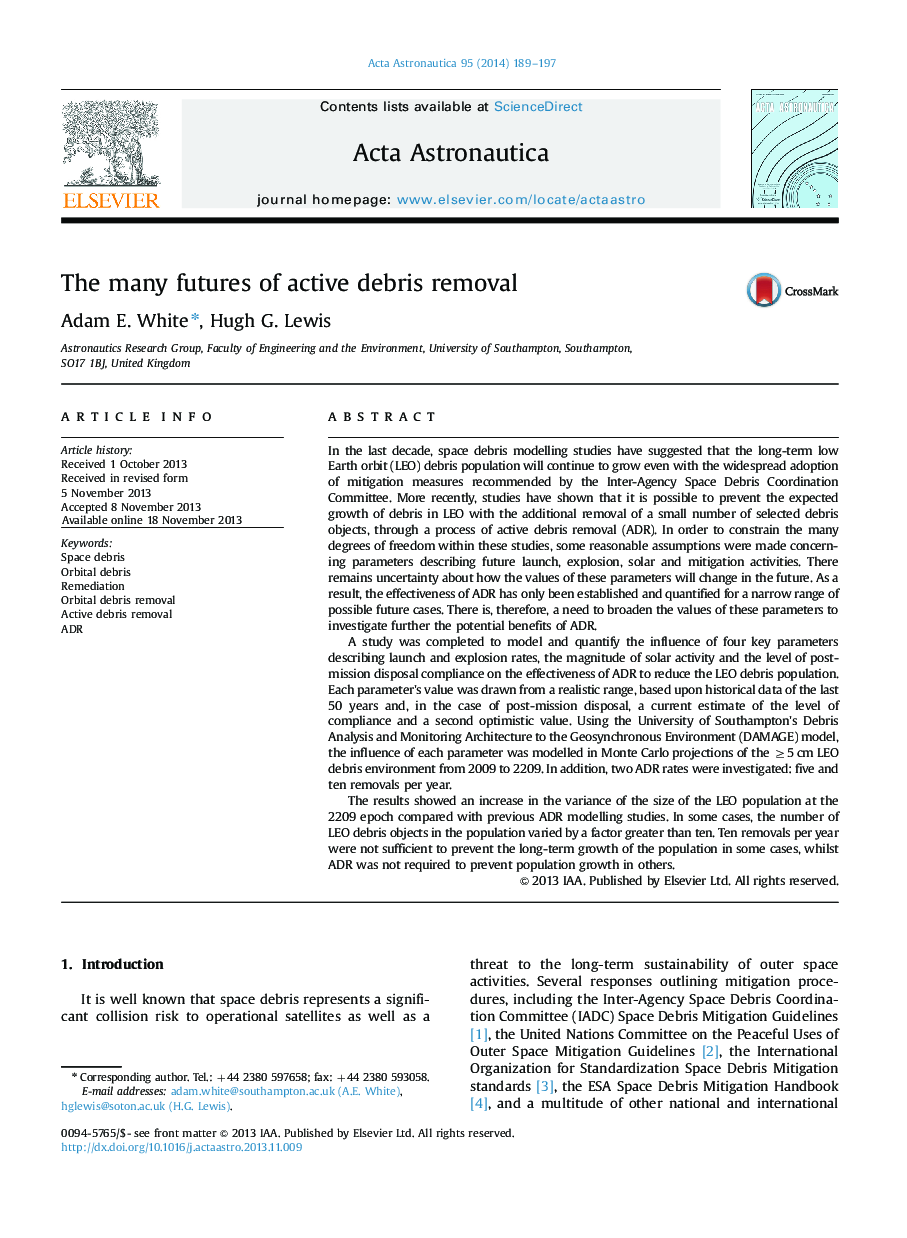| Article ID | Journal | Published Year | Pages | File Type |
|---|---|---|---|---|
| 1714687 | Acta Astronautica | 2014 | 9 Pages |
•We model launch, explosion, solar and mitigation activity with active debris removal.•The low Earth orbit debris population varied in size by a factor greater than ten.•Active debris removal is an effective measure to help control the debris population.•A large number of removals are needed prevent the growth of the 5–10 cm population.
In the last decade, space debris modelling studies have suggested that the long-term low Earth orbit (LEO) debris population will continue to grow even with the widespread adoption of mitigation measures recommended by the Inter-Agency Space Debris Coordination Committee. More recently, studies have shown that it is possible to prevent the expected growth of debris in LEO with the additional removal of a small number of selected debris objects, through a process of active debris removal (ADR). In order to constrain the many degrees of freedom within these studies, some reasonable assumptions were made concerning parameters describing future launch, explosion, solar and mitigation activities. There remains uncertainty about how the values of these parameters will change in the future. As a result, the effectiveness of ADR has only been established and quantified for a narrow range of possible future cases. There is, therefore, a need to broaden the values of these parameters to investigate further the potential benefits of ADR.A study was completed to model and quantify the influence of four key parameters describing launch and explosion rates, the magnitude of solar activity and the level of post-mission disposal compliance on the effectiveness of ADR to reduce the LEO debris population. Each parameter's value was drawn from a realistic range, based upon historical data of the last 50 years and, in the case of post-mission disposal, a current estimate of the level of compliance and a second optimistic value. Using the University of Southampton's Debris Analysis and Monitoring Architecture to the Geosynchronous Environment (DAMAGE) model, the influence of each parameter was modelled in Monte Carlo projections of the ≥5 cm LEO debris environment from 2009 to 2209. In addition, two ADR rates were investigated: five and ten removals per year.The results showed an increase in the variance of the size of the LEO population at the 2209 epoch compared with previous ADR modelling studies. In some cases, the number of LEO debris objects in the population varied by a factor greater than ten. Ten removals per year were not sufficient to prevent the long-term growth of the population in some cases, whilst ADR was not required to prevent population growth in others.
